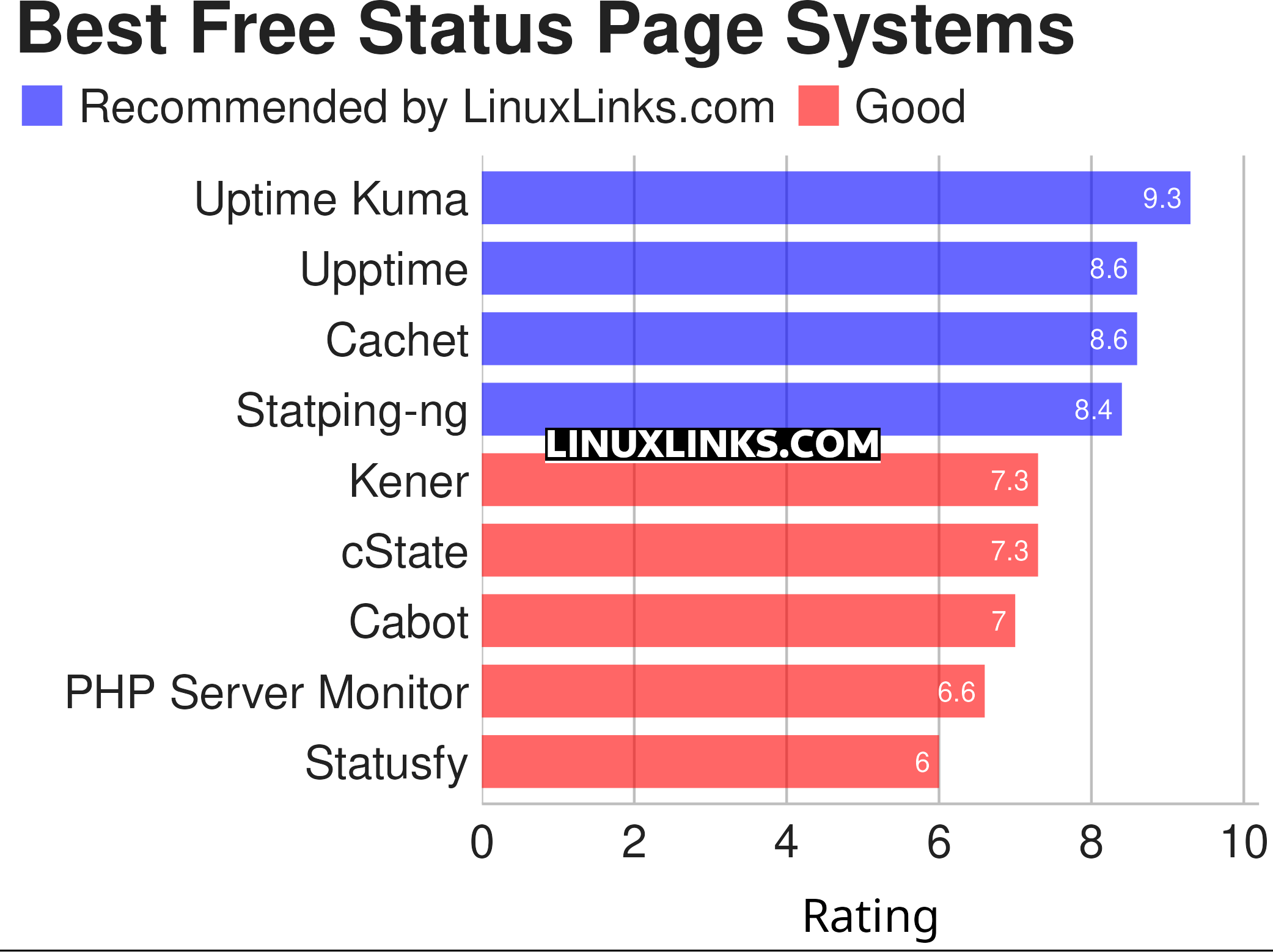A status page system is software that lets you communicate incidents, schedule maintenance and downtimes with your customers.
A status page can be public or private. Public stage pages engender customer trust and demonstrate the reliability of a platform. Private status pages are useful to communicate incidents with internal stakeholders.
Status page systems offer control over how to communicate an incident on the status page. Good systems let you notify customers and stakeholders in real time reducing the volume of customer support queries.
There are many status page systems available for Linux. We recommend our favorites captured in a legendary LinuxLinks chart. We only showcase free and open source software here.

Let’s explore the 9 status page tools. For each application we have compiled its own portal page, a full description with an in-depth analysis of its features, a screenshot of the software in action together with links to relevant resources.
| Status Page Systems | |
|---|---|
| Uptime Kuma | Excellent monitoring tool with a simple status page |
| Upptime | Uptime monitor / status page using GitHub Actions, Issues, and Pages |
| Cachet | Status page system for everyone |
| Statping-ng | Status page and monitoring server |
| Kener | Node.js status page tool |
| cState | Tiny and simple status page |
| Cabot | Provides features of PagerDuty, Server Density, Pingdom and Nagios |
| PHP Server Monitor | Script that checks whether your websites and servers are up and running |
| Statusfy | Focus on writing your Incidents Reports and let the magic happen |
This article has been revamped in line with our recent announcement.
 Read our complete collection of recommended free and open source software. Our curated compilation covers all categories of software. Read our complete collection of recommended free and open source software. Our curated compilation covers all categories of software. Spotted a useful open source Linux program not covered on our site? Please let us know by completing this form. The software collection forms part of our series of informative articles for Linux enthusiasts. There are hundreds of in-depth reviews, open source alternatives to proprietary software from large corporations like Google, Microsoft, Apple, Adobe, IBM, Cisco, Oracle, and Autodesk. There are also fun things to try, hardware, free programming books and tutorials, and much more. |

Uptime Karma has a whopping 57.6K GitHub stars.
That’s because it’s awesome OSS.